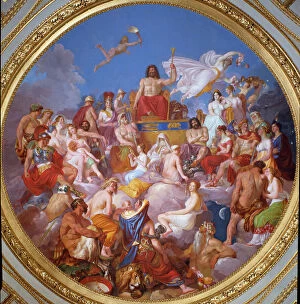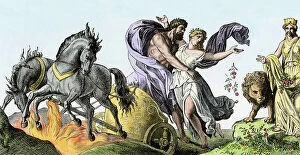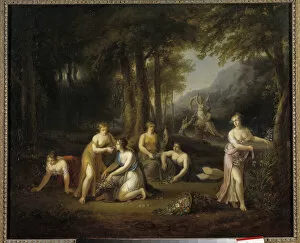Pluto Hades Collection
"Pluto Hades: The Enigmatic God of Wealth and the Underworld" In the Council of the Gods, Zeus presides over Olympus, surrounded by a pantheon of divinities
For sale as Licensed Images
Choose your image, Select your licence and Download the media
"Pluto Hades: The Enigmatic God of Wealth and the Underworld" In the Council of the Gods, Zeus presides over Olympus, surrounded by a pantheon of divinities. Among them stands Pluto, the god of wealth in mythology, symbolized on stock exchanges as an allegory of greed. Clad in rags with a gold chain serving as his belt, he epitomizes how possession enslaves one to material desires. The Abduction of Proserpine is immortalized in marble sculpture from 1621-1622. This mythological tale depicts Pluto taking Persephone before his mother Ceres (Demeter), highlighting the power struggle between life and death. Greek art further portrays this captivating story through votive terracotta tablets from Persephone seated on her throne alongside Hades from Locri. Their union represents both love and darkness intertwined. A painting from the 16th-17th century captures The Removal of Proserpine, showcasing Pluto's dominance over life's fragility. Augustin Pajou's low stucco relief titled "The Fire or Pluto Removing Proserpine" adds depth to this narrative. Jan Breugel Le Vieux's masterpiece Orpheus in the Underworld reveals another facet of Pluto's realm. Here we witness him with Cerberus at his feet while Orpheus navigates through this mysterious domain. An Apulian mascheron krater showcases Hades and Persephone within a Naiskos structure at its center - a testament to their enduring presence in ancient culture. Meanwhile, Eurydice accompanies Orpheus on their ill-fated journey back to Earth in an oil-on-canvas painting from 1636. Lastly, a pinax or votive booklet illustrates Persephone and Hades reuniting within the depths of the Underworld - an eternal bond that transcends mortal boundaries.

















